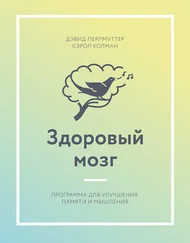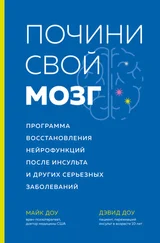International Data Corporation. “Always Connected: How Smartphones and Social Keep Us Engaged”. https://www.nu.nl/files/IDC-Facebook Always Connected%281%29.pdf(проверено 19 мая 2019).
International Data Corporation. “Always Connected.”
“Kellogg Reveals Results of Monumental Breakfast Survey,” press release, June 22, 2011. http://newsroom.kelloggcompany.com/news-releases?item=76379.
J. E. Gangwisch et al. “High Glycemic Index Diet as a Risk Factor for Depression: Analyses from the Women’s Health Initiative,” Am. J. Clin. Nutr. 102, № 2 (August 2015): 454–463.
Разновидность магнитно-резонансной томографии (фМРТ), которая проводится в процессе выполнения испытуемым какого-то задания экспериментатора. При этом становится видно, какие участки мозга активируются при выполнении поставленной задачи. Прим. ред.
N. D. Mehta et al. “Inflammation Negatively Correlates with Amygdala-Ventromedial Prefrontal Functional Connectivity in Association with Anxiety in Patients with Depression: Preliminary Results,” Brain Behav. Immun. 73 (October 2018): 725–730.
T. K. Inagaki et al. “Inflammation Selectively Enhances Amygdala Activity to Socially Threatening Images,” Neuroimage 59, № 4 (February 2012): 3222–3226.
E. Stice, K. S. Burger, and S. Yokum. “Relative Ability of Fat and Sugar Tastes to Activate Reward, Gustatory, and Somatosensory Regions,” Am. J. Clin. Nutr. 98, № 6 (December 2013): 1377–1384.
N. D. Volkow, R. A. Wise, and R. Baler. “The Dopamine Motive System: Implications for Drug and Food Addiction,” Nat. Rev. Neurosci. 18, № 12 (November 2017): 741–752.
American Psychological Association. “Stress in America: The State of Our Nation” (November 1, 2017). https://www.apa.org/news/press/releases/stress/2017/state-nation.pdf.
A. Mitchell et al. “The Modern News Consumer: News Attitudes and Practices in the Digital Era,” Pew Research Center, July 7, 2016. https://www.journalism.org/2016/07/07/the-modern-news-consumer/.
Mitchell et al. “The Modern News Consumer.”
Mitchell et al. “The Modern News Consumer.”
American Psychological Association. “Stress in America.”
J. Poushter. “Worldwide, People Divided on Whether Life Today Is Better Than in the Past,” Pew Research Center, December 5, 2017. https://www.pewresearch.org/global/2017/12/05/worldwide-people-divided-on-whether-life-today-is-better-than-in-the-past/.
J. Gramlich. “5 Facts about Crime in the U.S.,” Pew Research Center, January 3, 2019. https://www.pewresearch.org/fact-tank/2019/01/03/5-facts-about-crime-in-the-u-s/.
M. Roser and M. Nagdy. “Optimism and Pessimism,” OurWorldInData.org. https://ourworldindata.org/optimism-pessimism(проверено 19 мая 2019).
“The Burden of Stress in America,” survey conducted by the NPR/Robert Wood Johnson Foundation/Harvard School of Public Health, 2014. https://media.npr.org/documents/2014/july/npr_rwfj_harvard_stress_poll.pdf.
A. Szabo. “Negative Psychological Effects of Watching the News in the Television: Relaxation or Another Intervention May Be Needed to Buffer Them!” Int. J. Behav. Med. 14, № 2 (2007): 57–62.
K. Leetaru. “Culturomics 2.0: Forecasting Large-Scale Human Behavior Using Global News Media Tone in Time and Space,” First Monday 16, № 9 (September 5, 2011).
S. Vosoughi, D. Roy, and S. Aral. “The Spread of True and False News Online,” MIT Initiative on the Digital Economy Research Brief, 2017. http://ide.mit.edu/sites/default/files/publications/2017 IDE Research Brief False News.pdf.
“Dig Deeper: Critical Thinking in the Digital Age,” MindEdge, 2018. https://www2.mindedge.com/page/dig-deeper.
«Пузырь фильтров» – результат персонализированного поиска: человеку предлагается информация, подобранная в соответствии с его предыдущими запросами, а прочие сведения вовсе не выдаются. Прим. пер.
“Labor Day Survey: 51 % of U.S. Employees Overall Satisfied with Their Job,” press release, August 29. 2018, https://www.conference-board.org/press/pressdetail.cfm?pressid=7528.
C. Kong. “Bored at Work,” Robert Half blog, October 19, 2017. https://www.roberthalf.com/blog/management-tips/bored-at-work.
“State of the Global Workplace,” Gallup, 2017. https://bit.ly/32MIA1C.
“Mind the Workplace,” доклад Mental Health America, 2017. https://www.mentalhealthamerica.net/sites/default/files/Mind the Workplace – MHA Workplace Health Survey 2017 FINAL.pdf.
“Nielsen Total Audience Report: Q1 2018”. https://www.nielsen.com/us/en/insights/report/2018/q1-2018-total-audience-report/.
Программа мгновенного обмена сообщениями, появившаяся в 1997 году. Не поддерживается с 2017 года. Прим. пер.
T. Harris. “How Technology Is Hijacking Your Mind – from a Magician and Google Design Ethicist,” Thrive Global, May 18, 2016.
Аддиктивное поведение, проявляющееся в патологическом влечении к играм, в том числе онлайн и в автономном режиме, включено в Международную классификацию болезней (МКБ-11), которая должна вступить в действие 1 января 2022 года. Прим. ред.
C. Cheng and A. Y. Li. “Internet Addiction Prevalence and Quality of (Real) Life: A Meta-Analysis of 31 Nations Across Seven World Regions,” Cyberpsychol. Behav. Soc. Netw. 17, № 12 (December 2014): 755–760.
Nathan McDonald. “Digital in 2018: World’s Internet Users Pass the 4 Billion Mark,” We Are Social, January 30, 2018. https://wearesocial.com/us/blog/2018/01/global-digital-report-2018.
J. T. F. Lau et al. “Incidence and Predictive Factors of Internet Addiction Among Chinese Secondary School Students in Hong Kong: A Longitudinal Study,” Soc. Psychiatry Psychiatr. Epidemiol. 52, № 6 (June 2017): 657–667.
M. A. Moreno et al. “Problematic Internet Use Among US Youth: A Systematic Review,” Arch. Pediatr. Adolesc. Med. 165, № 9 (September 2011): 797–805.
Y. Zhou et al. “Gray Matter Abnormalities in Internet Addiction: A Voxel-Based Morphometry Study,” Eur. J. Radiol. 79, № 1 (July 2011): 92–95. См. также: R. Z. Goldstein and N. D. Volkow, “Dysfunction of the Prefrontal Cortex in Addiction: Neuroimaging Findings and Clinical Implications,” Nat. Rev. Neurosci. 12, № 11 (October 2011): 652–669.
Читать дальше
Конец ознакомительного отрывка
Купить книгу




![Дэвид Доу - Почини свой мозг. Программа восстановления нейрофункций после инсульта и других серьезных заболеваний [litres]](/books/431118/devid-dou-pochini-svoj-mozg-programma-vosstanovlen-thumb.webp)







